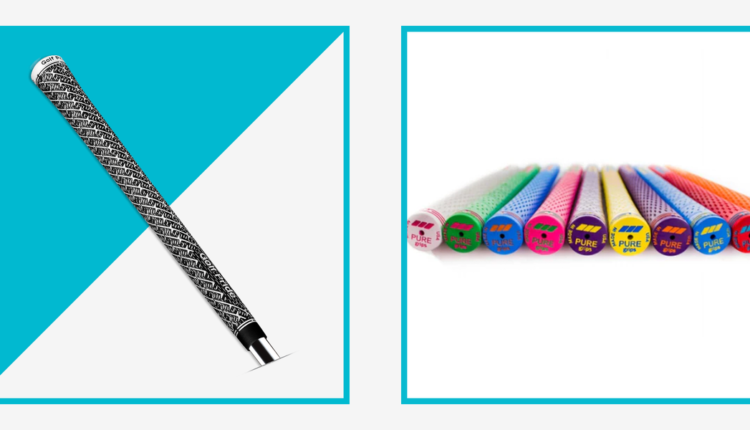Materials: Knowing the type of material used on a golf grip will help determine features like comfort and durability. For example, the Winn DriTac is known for being comfortable and sticky, but the material of the grip is notorious for not lasting much longer than a year. On the flip side, a tough grip like the Pure Pro is known for its durability and stickiness, but not so much for comfort. “When choosing new grips, I look for quality construction and materials that provide traction, comfort and moisture management,” says Clapp. “I prefer midsize grips with a cord or rubberized texture to promote stability.”
Grip Type: Looking hard at the actual detail of the golf grip is smart, as tons of grips these days offer its own unique textures and cuts to help improve grip and feel. “Often overlooked by most amateurs, the type of grip can impact the overall performance of a club,” says Roesch. You should also consider any color patterns or markings in the grip, as these could be a benefit to golfers for having a point of reference on lining up proper hand positioning on every swing.
Grip Size: There are a few different sizes you can choose from in your golf grips, and while they mostly coordinate with your hand size, there’s also a bit of a strategy play in going up or down your natural size. If you don’t know your size, get fitted by a local professional. They will advise you on what is best. “Proper sizing aligns your hands, wrists and forearms for more consistency,” says Clapp.
Testing: Golf grips are all about feel, so it’s important to do your research and also try and test in person when you are hung up on a decision. “Golfers need to take more consideration with their grips,” says Riggs. “Test out various options to determine what gives you the best feel and ensure you are using the correct size. And remember grips can be customized with layers of tape to add thickness as needed.”


Comments are closed.